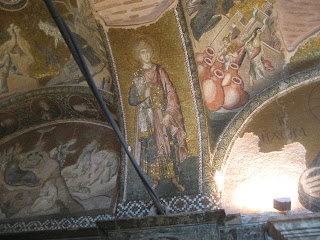
The emperor Justinian built this church in 537 AD to remind people of the greatness of the Roman empire, and boy did he get it right. Even in his day, when only the wealthy dispatched letters that could take months to reach their destination, the Aya Sofya was known far and wide as the most outstanding church in Christendom. Then in 1453 sultan Mehmed laid siege to Constantinople, driven by desire to convert the city to Islam, and took the Aya Sofya, turning it into a mosque for the next 400 years. In 1935, Atatürk (whose secular reforms abolished the religious government), transformed the building into a museum. The carpets were removed and the marble floor decorations such as the Omphalion appeared for the first time in centuries, and white plaster was taken off some of the walls, revealing ancient mosaics.

The Aya Sofya keeps good company with the Chora Church, which stands just outside the original boundaries of Constantinople. Like Sofya, this church was built by Justinian, converted to Islam in the 15th century, then reclaimed as a museum in the mid-20th. However, Chora has more byzantine influence, since it was badly destroyed in a 12th-century earth quake (that somehow missed the historic centre of Istanbul, not far away) and was rebuilt and lavishly redecorated afterwards. Today you can still see this beautiful artwork, which is something of a minor miracle considering that Islam forbids iconic images (explaining why all the mosaics in churches were covered up). But the fact that they were only covered, rather than destroyed shows the respect that the conquering peoples had for fine craftsmanship.
Chora was the church in which the royalty of the day went to worship, and it is decorated in the splendor to which the royals were accustomed. The richness of the themes and the imagery surrounds you as you walk in and I found myself swept away by the atmosphere of decadence that was so prevalent in the golden age of Byzantium.

The saints and angels high up on the walls and ceiling must have been a constant reminder to the worshipers of the presence of the divine all around, and that people cannot hide from their choices in life. One has to wonder if the Islamic conquerors in the 15th-century somehow took this to heart when they covered the walls and ushered in a new religion and a new way of understanding the world.

























No comments:
Post a Comment